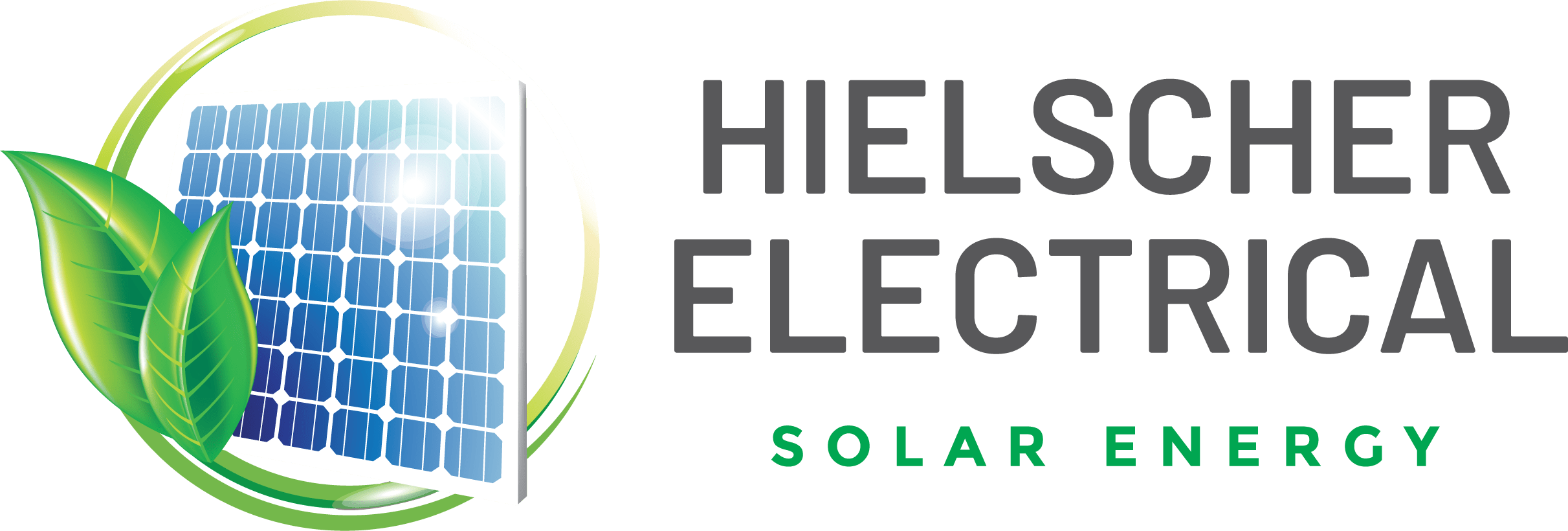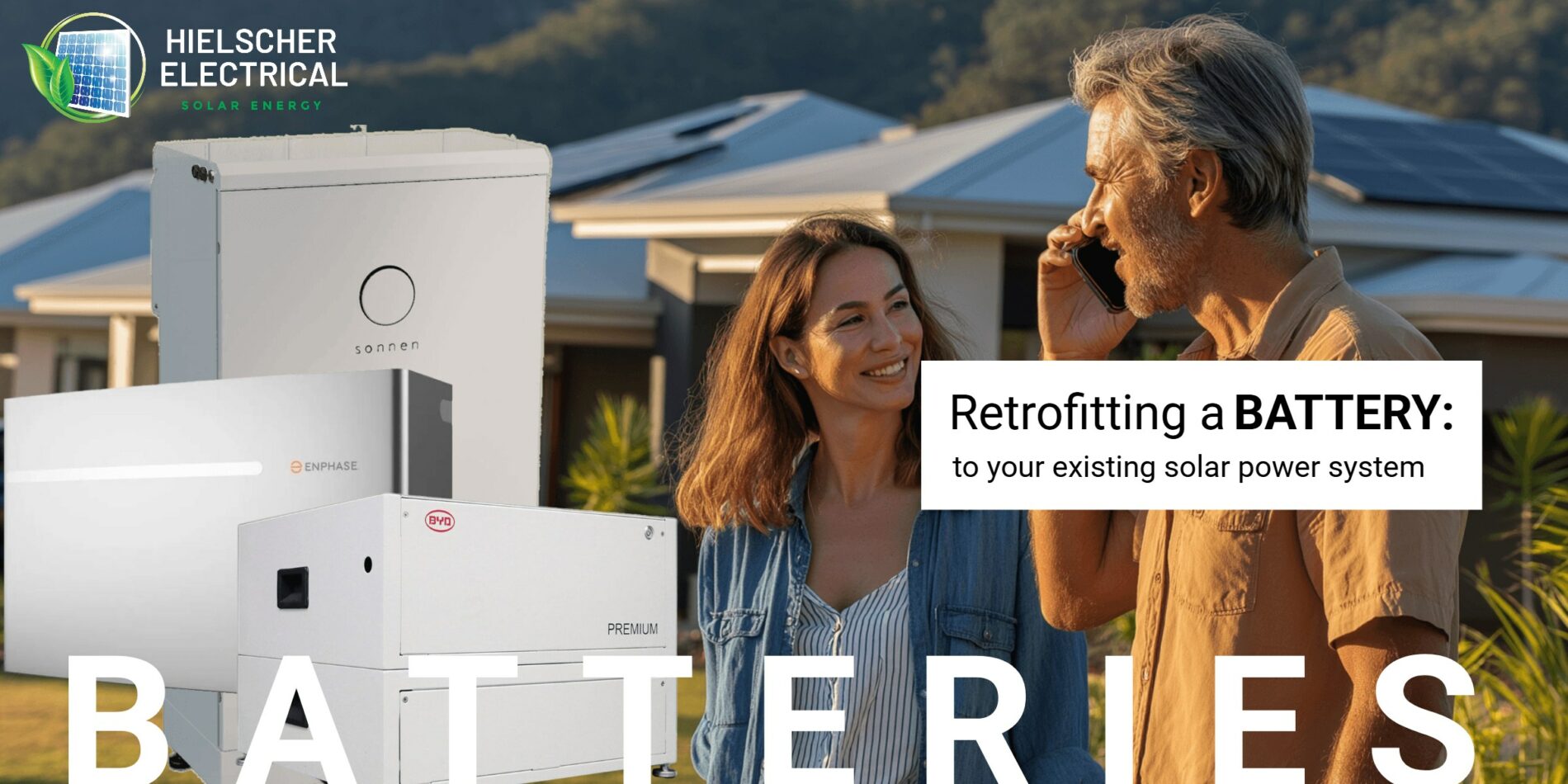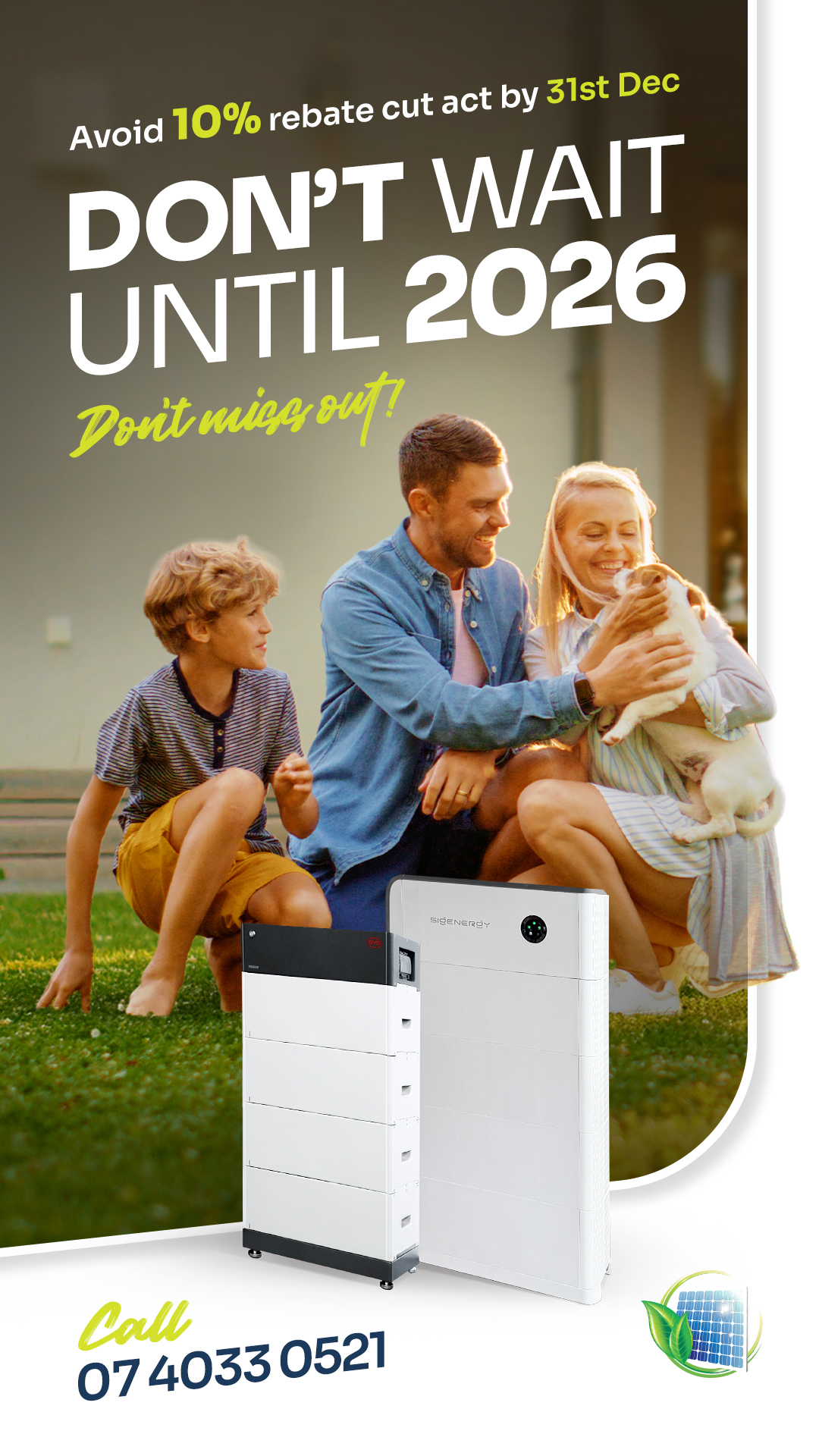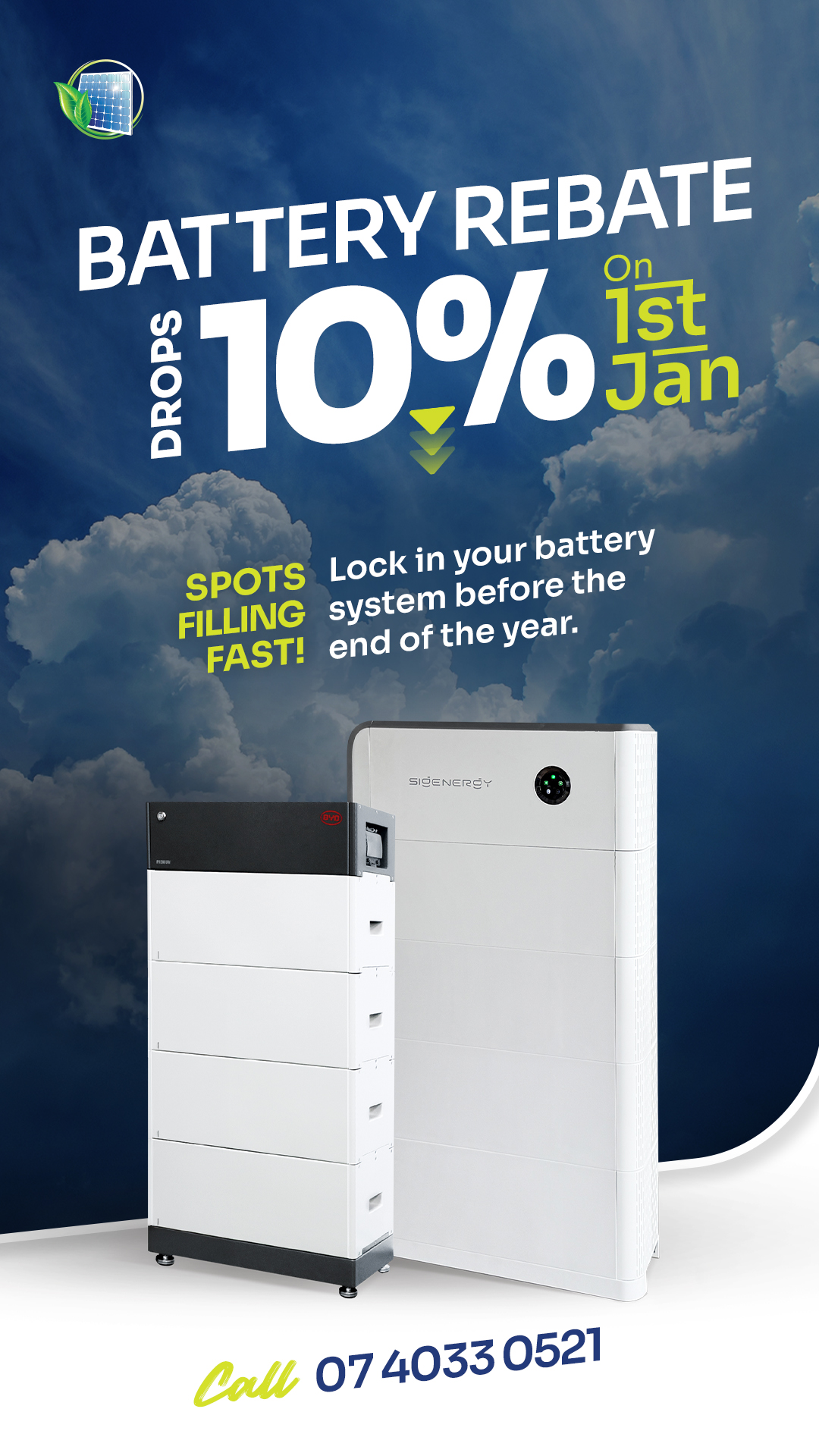
If you live in Cairns, you already know we’ve got something special: sunshine, and plenty of it. That bright tropical sun makes our region one of the best places in Australia to harness solar energy. And many locals have already made the switch.
But if your system was installed 15, 10, or even 5 years ago, there’s a good chance it’s not keeping up with how you use electricity today. Back then, solar was mostly about reducing your bill and sending excess power back to the grid.
Fast forward to now, and the game has changed. Power prices have soared. Our homes are more energy-hungry. And new technology is making smarter energy use possible, including batteries that can store solar power and protect your home during blackouts.
So how do you know if your current solar setup is still doing the job? And what’s involved in upgrading it?
Let’s break it down, step by step, with practical advice.
1. Is Your Solar System Still Working for You?
Start with Your Power Bill
Your Ergon bill is like a window into your solar system’s performance. It tells you:
- How much additional energy you are buying
- How much solar you’re exporting
If you’re sending a lot of power to the grid during the day — but still paying for electricity at night — your solar system isn’t doing its best work for your wallet.
Here’s why that matters:
- Exported solar earns you around 8.66 cents per kWh
- Power you buy costs nearly 33 cents per kWh
Let’s say:
- You export 12 kWh/day = $1.04 earned
- You buy 10 kWh/day = $3.30 spent
That’s more than $880 a year lost to the grid — when you could be storing that power and using it later with a battery.
But it’s not just about numbers. We also look at your system’s size and usage pattern:
- If your solar system is small, or you use most of your energy while the sun’s out (think air con, pool pumps, washing machines), there might not be enough leftover solar to charge a battery efficiently.
In that case, we may recommend:
- Adding more solar panels
- Upgrading your inverter to support a larger array
Our goal? Make sure you’re not just generating solar — but using it smarter, and saving more.
2. Why Your Old Inverter Might Be Holding You Back
If your inverter is more than 5 to 7 years old, there’s a good chance it wasn’t designed to work with a battery. Back then, battery storage wasn’t common or affordable — so most inverters were built to power your home during the day and send any excess back to the grid.
And it’s not just about battery compatibility. Most systems installed 10 to 15 years ago were quite small by today’s standards — often around 1.5 to 3 kW — because that’s all you needed to make the numbers work.
Why? At the time, Ergon was paying 44 cents per kilowatt-hour for exported solar — a premium feed-in tariff that meant it made financial sense to send power to the grid rather than store it. Battery storage wasn’t on the radar for most homes, and inverters weren’t built with that functionality in mind.
Fast forward to today: feed-in tariffs are down to 8.66 cents per kWh, while the electricity you buy back costs nearly 33 cents per kWh. That flips the equation entirely — now, storing and using your own solar is far more valuable than exporting it.
Even if your original system was sold as “battery-ready,” it may not meet today’s safety or communication standards. Modern batteries require smart inverters that can communicate with apps, manage energy flows efficiently, and isolate during blackouts.
Think of it like an old smartphone. It might still power on, but it can’t run the apps you need today. The same goes for early-generation solar equipment.
Upgrading your inverter (and expanding your panels if needed) opens the door to smarter energy use, better self-sufficiency, and access to rebates and backup features.
3. Is Your Inverter Battery-Compatible?
If your inverter can’t connect to a battery, it doesn’t matter how much solar you’re producing. Most inverters older than 5 to 7 years aren’t compatible with modern battery systems. In that case, upgrading your inverter is a must before adding storage.
But it’s not just about age — it’s about compatibility between brands. Not every inverter works with every battery.
Using incompatible products can lead to:
- Limited functionality (e.g. no blackout protection)
- Complicated monitoring systems
- Warranty issues if one brand blames the other for a fault
That’s why we only recommend combinations we know are fully compatible — and covered under a unified warranty wherever possible.
Restart Your Warranty, Improve Performance
Upgrading your inverter also restarts your warranty period, often giving you 10 more years of peace of mind with better energy conversion, improved monitoring, and smarter energy control features.
Consider an All-in-One System
Want a cleaner setup with fewer compatibility headaches? All-in-one systems — like Sigenergy — combine inverter, battery, and backup features into a single unit. They’re easier to install, take up less space, and give you a unified control system and warranty.
Whether you prefer a custom combo or an integrated system, we’ll walk you through your options based on what suits your existing gear, your budget, and your energy goals.
Note: For single-phase homes in Cairns, there’s a legal 10 kW inverter limit. We design all upgrades — including extra panels and storage — to stay within that limit and keep you compliant with Ergon and Clean Energy Council (CEC) guidelines.
4. Can Your System Support a Battery Effectively?
It’s Not Just About Having Solar — It’s About Having Enough Solar
A battery doesn’t generate electricity — it stores what your panels don’t use during the day. If your current setup is too small or your daytime use is too high, you might not have enough extra solar left over to fill a battery.
Here’s what we check:
- Is your system regularly exporting power during daylight hours?
- Is your inverter maxed out or can it support more panels?
If not, we might suggest:
- Upgrading your inverter
- Installing more panels
- Or a full system enhancement to increase surplus energy
Why Bigger is Often Better (and Allowed)
Once you add a battery, you’re allowed to oversize your solar array more than usual. That means:
- More panels
- More surplus solar
- More reliable battery charging
Especially in Cairns — where wet season clouds and high summer energy usage are the norm — a larger array ensures your system keeps working hard year-round.
For example:
| Battery Type | Max Panel Oversize | Max Panel Size (with 10kW inverter) |
| No Battery | 133% | 13.3 kW |
| With Fronius/BYD Battery combination | 150% | 15 kW |
| With Tesla Powerwall 3 | Up to 200% | 20 kW |
| With SigenEnergy | Up to 200% | 20 kW |
Whether you want to prepare for blackout protection or simply get the most out of your energy, having enough solar is key.
5. Choose the Right Battery for Your Home
No two homes are the same — and no two batteries are either. Choosing the right battery means looking beyond just the storage size.
Key Things to Consider:
- Usable energy (not all batteries let you use 100% of their capacity)
- Backup capability (can it power your home in a blackout?)
- Surge capacity — how much power the battery can deliver instantly
What Is Surge Capacity — and Why Does It Matter?
When appliances turn on, many use a sudden burst of power called a surge load. If your battery can’t handle that spike, it might:
- Shut down the appliance
- Trip the system
- Or fail to deliver backup power when you need it most
Here are some typical surge demands:
| Appliance | Running Load | Startup Surge |
| LED Lights (x4) | 0.2 kW | Negligible |
| Wi-Fi Router | 0.05 kW | Negligible |
| Fridge | 0.15 kW | 0.6 kW |
| Air Conditioner | 2.0 kW | 3.5–5.0 kW |
| Pool Pump | 1.5 kW | 3.0 kW+ |
Surge capacity is just as important as total storage. A battery might have enough stored energy — but if it can’t deliver a surge when needed, you’ll feel it.
Compare Top Battery Options
| Battery | Total Capacity | Usable Capacity | Surge Capacity | Backup Capable? |
| Tesla Powerwall 3 | 13.5 kWh | 100% | 15kW surge / 10kW cont. | Full home or essentials |
| BYD Battery | 2.75–19.3 kWh | ~95% | Depends on inverter | Customisable |
| SigenEnergy | 8–48 kWh | ~90–95% | Up to 15kW surge / 10 cont. | Full home capable |
Whether you’re powering a fridge or your whole home, we’ll match you with a battery system that suits your real-life usage — not just the brochure numbers.
6. What About During a Blackout?
For many Cairns homeowners, one of the biggest reasons to invest in a battery is blackout protection — especially during storm season.
But here’s what most people don’t realise:
Not All Batteries Provide Backup
To stay powered during a blackout, your system needs:
- A battery that supports backup mode or off-grid operation
- An inverter that can safely isolate your home from the grid
Some systems are designed to run only when the grid is online. Others — like Tesla Powerwall 3, Fronius or SigenEnergy — can continue powering your home even when the grid is down.
Plan for Real-World Outages
We help you choose a battery that:
- Delivers reliable backup during blackouts
- Handles real-world appliance demands
- Performs year-round — not just on ideal days
Whether you’re after basic blackout protection or want peace of mind for your entire home, we’ll guide you through your options with clear, local advice.
7. Cairns’ Climate = Seasonal Solar Swings
Cairns is one of the sunniest regions in Australia — but it’s also hot, humid, and tropical, with a distinct wet season that arrives in summer, not winter.
That seasonal shift matters when designing your solar and battery system.
☁️ Summer = Sun + Storms
During the wet season (December to March), you’ll see:
- High energy use (thanks to air conditioning)
- Unpredictable solar output (due to cloud cover, rain, and storms)
Even though summer days are longer, solar production can dip during extended wet periods — just when your household demand is at its peak.
Oversizing Helps Balance the Extremes
To offset those dips, we often recommend:
- Oversizing your solar panel array, especially if you’re adding a battery
- Choosing a battery large enough to carry you through cloudy spells and longer nights
This helps your system stay productive — not just on clear days, but throughout the wet season and into winter.
Smart Design = Year-Round Performance
Our systems are designed with Cairns’ unique climate in mind. That means:
- Factoring in storm season, humidity, and rainfall
- Ensuring your panels are positioned for maximum generation in all seasons
- Choosing components that are built to last in tropical conditions
8. Don’t Forget the Battery Booster Rebate
Thousands in Savings — And It Directly Reduces Your Investment
The Queensland Battery Booster rebate is officially live — and it’s a game-changer for making battery storage more affordable.
How It Works:
- When you install your battery through a CEC-accredited retailer (like us), the rebate directly reduces your upfront cost.
- This means the quote you receive will already reflect the rebate discount — saving you thousands from day one.
- The rebate is a one-time offer per home — additional batteries installed later are not eligible.
- Smart planning is key to make the most of this opportunity.
We handle everything for you — eligibility checks, system design to meet rebate criteria, paperwork, and the claim process — so you don’t have to worry.
Quick Battery Retrofit Checklist
| Step | What to Check | Why It Matters |
| 1. Your Ergon Bill | Are you exporting solar but still paying for night-time usage? | Helps identify if storing power (instead of exporting it) will save you money |
| 2. Inverter Compatibility | Is your inverter less than 7 years old and battery-ready? | Older inverters often can’t support modern batteries or backup features |
| 3. Surplus Solar | Are you regularly exporting power during the day? | Batteries only charge from excess solar — no surplus = no savings |
| 4. System Size & Limits | Can you maximise panel/inverter limits? | Determines if you can expand for better battery charging and overall savings |
| 5. Panel Condition | Are your panels in a good clean condition? | Old or degraded panels may underperform — worth checking before investing in a battery |
| 6. Blackout Requirements | Do you want full home backup or just essentials? | Affects your choice of battery and inverter — and whether you need surge capacity |
| 7. Battery Type & Surge Rating | Can the battery handle your appliances’ startup spikes? | Prevents tripping, shutdowns, or failure during peak demand |
| 8. Seasonal Solar Output | Will your system still perform during Cairns’ wet season? | Oversizing your system ensures performance even in cloudy or stormy months |
| 9. Battery Booster Rebate | Are you eligible — and working with a CEC-accredited installer? | You could save thousands upfront — but it’s a once-only offer |
Local Help. No Sales Gimmicks.
We’ve helped hundreds of Cairns homes upgrade their solar systems — often without needing to start from scratch. If your current system still has life in it, we’ll help you make the most of it. If it needs a tune-up or full redesign, we’ll keep it simple.
Whether you’re:
- Adding your first battery
- Upgrading an inverter
- Expanding your panel array
- Exploring blackout protection
We’ll walk you through your options with zero pressure and local expertise you can trust.







Useful information, I didn’t know much about batteries
Absolutely agree with how the article highlights that upgrading an older inverter can completely transform how efficiently your solar setup works — it’s amazing how much smarter today’s technology has become. A solar battery system really does take that next step in helping homeowners get more value from their panels, especially in places with lots of sun like Cairns. It’s great to see local experts like KDEC offering clear guidance on retrofitting options without the sales fluff. Great post! Thanks!
Have you noticed more homeowners starting to consider upgrades as energy costs continue to rise?